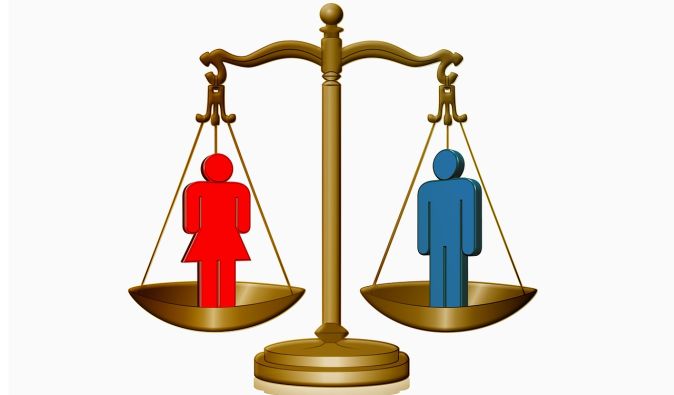The Law on Gender Equality
Pursuant to the 1992 Constitution of the Socialist Republic of Vietnam amended and supplemented according to the Resolution No. 51/2001/QH10 dated 25th December 2001 of the 10th Session of the X Legislature of the National Assembly.
This Law provides for gender equality.
Chapter I
GENERAL PROVISIONS
Article 1. Scope of adjustment
This law provides for principles of gender equality in all fields of social and family life, measures ensuring gender equality, responsibilities of agencies, organizations, families, individuals in exercising gender equality.
Article 2. Target group
1. State institutions, political organizations, socio-political organizations, socio-political and professional organizations, social organizations, social and professional organizations, economic organizations, non-productive units, units of people’s armed forces, families and Vietnamese citizens (hereinafter referred to as agencies, organizations, families and individuals).
2. Foreign agencies and organizations, international organizations operating in the territory of Vietnam, foreign individuals legally residing in Vietnam.
Article 3. Application of international treaties on gender equality
Where an international treaty to which the Socialist Republic of Vietnam is one of the signatories contains provisions that differ from those of this law, the provisions set out in that international treaty shall be applied.
Article 4. Gender equality goals
The gender equality goals are to eliminate gender discrimination, to create equal opportunities for man and woman in socio-economic development and human resources development in order to reach substantial equality between man and woman, and to establish and enhance cooperation and mutual assistance between man and woman in all fields of social and family life.
Article 5. Interpretation of terms
In this Law, the terms below can be understood as follows:
1. Gender indicates the characteristics, positions and roles of man and woman in all social relationships.
2. Sex indicates biological characteristics of man and woman.
3. Gender equality indicates that man and woman have equal position and role; are given equal conditions and opportunities to develop their capacities for the development of the community, family and equally enjoy the achievement of that development.
4. Gender preconception is negative and partial attitude, acknowledgement and assessment of the characteristics, position, role and capacity of man or woman.
5. Gender discrimination indicates the act of restricting, excluding, not recognizing or not appreciating the role and position of man and woman leading to inequality between man and woman in all fields of social and family life.
6. Measure to promote gender equality is the measure aimed at ensuring substantial gender equality, set forth by the state authorities in cases there remains considerable imparity between man and woman concerning the positions, roles, conditions, and opportunities for man and woman to bring into play all their capacities and to enjoy the achievement of the development where the application of equal regulations for man and woman can not remove this imparity. The measure to promote gender equality is to be implemented for a certain period of time and shall end when the gender equality goals have been achieved.
7. Mainstreaming gender equality in the process of making legal normative documents is the measure aimed at achieving the goal of gender equality by defining gender issue, forecasting the gender impact of documents, responsibilities and resources to deal with gender issues in the social relations that are adjusted by legal normative documents.
8. Gender equality activities are activities implemented by agencies, organizations, families and individuals to achieve the gender equality goal.
9. Gender Development Index (GDI) is the synthetic figures reflecting the real situation of gender equality, which are calculated based on life expectancy, educational level and per capita income of man and woman.
Article 6. Basic principles on gender equality
1. Man and woman are equal in all fields of social and family life.
2. Man and woman are not discriminated in terms of gender.
3. The measures aimed at promoting gender equality are not considered the gender discrimination.
4. Policies aimed at protecting and supporting the mother are not considered gender discrimination.
5. Ensuring the gender mainstreaming in the process of development and implementation of laws.
6. Exercising gender equality is the responsibility of agencies, organizations, families and individuals.
Article 7. State policies on gender equality
1. To ensure gender equality in all fields of politics, economy, culture, society and family; to support and provide man and woman with conditions for them to bring into play their abilities; to give them equal opportunities to take part in the process of development and to benefit from the achievements of the development.
2. To protect and support the mother during pregnancy, giving birth and upbringing her child; to facilitate man and woman in sharing housework.
3. To apply appropriate measures to eliminate backward customs and habits hindering the implementation of the gender equality goal.
4. To encourage agencies, organizations, families and individuals to take part in the gender equality promoting activities.
5. To support gender equality activities in the remote and mountainous areas, in areas of ethnic minority groups and areas still in extremely difficult socio-economic conditions; to support to create necessary conditions to increase the GDI in the industries, fields, and localities where the GDI is lower than the average level of the entire country.
Article 8. Contents of state management on gender equality
1. To formulate and implement national strategies, policies and goals on gender equality.
2. To promulgate and implement legal normative documents on gender equality.
3. To promulgate and implement measures aimed at promoting gender equality.
4. To propagate and disseminate policies and law on gender equality.
5. To build, train and foster the cadres working on gender equality.
6. To inspect, examine the implementation of the law on gender equality; to deal with complaints, denunciations and to handle violations of the law on gender equality.
7. To carry out statistical work, provision of information and report on gender equality.
8. To conduct international cooperation on gender equality.
Article 9. State management agency on gender equality
1. The Government shall have function of unified state management on gender equality.
2. The ministry or the ministerial-level agency assigned by the Government shall be responsible before the Government in implementing the state management on gender equality.
3. Ministries, ministerial-level agencies, within their mandate, shall have responsibility to coordinate with the state management agencies specified in section 2 of this Article to exercise state management on gender equality.
4. People’s committees at all levels exercise the state management on gender equality within their localities as devolved by the Government.
Article 10: Acts strictly prohibited
1. Acts impeding man and woman from exercising gender equality;
2. Gender discrimination in all forms;
3. Gender-based violence;
4. Other acts that are strictly prohibited.
Full text of the Law on Gender Equality: lawongenderequalityofficialengli.pdf

- Hôm nay 508
- Tổng lượt truy cập 6,864,688


Bình luận từ Facebook
Phản hồi